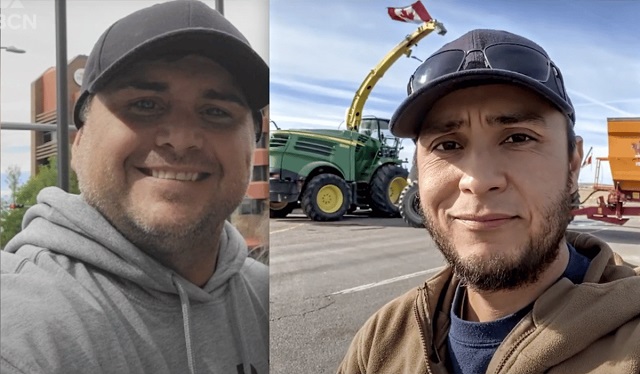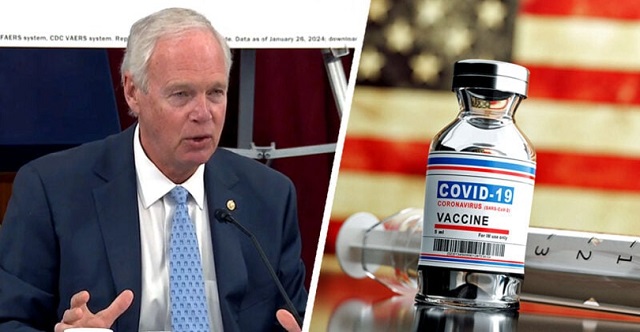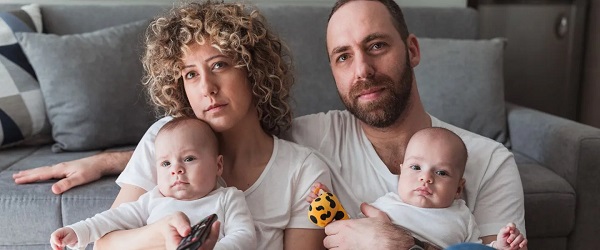COVID-19
Questions linger after Coutts verdict

Chris Carbert and Anthony Olienick Courtesy Bridge City News/YouTube
From the Frontier Centre for Public Policy
By Ray McGinnis
The Coutts trial may be over, but the questions it raises about justice and overreach continue.
A jury in the trial of Chris Carbert and Anthony “Tony” Olienick rendered a NOT GUILTY verdict on a charge of conspiracy to commit murder of police officers. Known as the Coutts Two, Carbert and Olienick’s trial lasted from June 6 to August 2, 2024. After two and a half days of deliberations, the jury also found the pair GUILTY of possession of weapons for a dangerous purpose, and mischief over $5,000. Olienick was also found GUILTY of possession of explosives for a dangerous purpose.
On February 13, 2022, Olienick was arrested outside Smuggler’s Saloon. Early on February 14, 2022, Chris Carbert was awakened from his sleep in a trailer by police loudspeaker.
Two Co-Accused Had All Charges Dropped in February
Conspiracy, possession of weapons, and mischief charges were also laid against Chris Lysak and Jerry Morin. Carbert, Olienick, Lysak and Morin, were dubbed the Coutts Four.
Lysak was arrested in Coutts late on February 13, 2022. Morin was arrested heading west of Calgary on Hwy. 22. He would work for a rancher near Priddis, a three-hour drive from Coutts. Lysak and Morin had all the original charges in the indictment dropped on Feb 6th, 2024.
Lysak pleaded to improper storage of a firearm. That charge typically results in a minor fine, not two years behind bars. Morin pled guilty to conspiracy to traffic firearms, not to trafficking firearms. Two years in custody — including solitary confinement and being witness to brutality between prisoners — had taken its toll.
Tony Olienick’s lawyer, Marilyn Burns, told this reporter, Morin was not guilty of the new charge to which he plead. But this was the plea deal the Crown would agree to. Morin and Lysak were released after 723 days behind bars.
Carbert and Olienick maintained their innocence. However, pre-trial deliberations in court dribbled out for over a year before the trial itself.
The Accused Were Unarmed
None of the original Coutts Four — Carbert, Olienick, Lysak or Morin — were armed when arrested. None had a criminal record. Three of the four are fathers with children. Before his arrest, Lethbridge resident Chris Carbert was a self-employed fisherman who also ran a landscaping and fencing business with nine employees.
Years before his arrest, Tony Olienick took part of the clean-up in High River, Alberta, after the 2013 floods. The self-employed gravel truck owner got contract work at a stone quarry.
Coutts Charges Cited to Invoke Emergencies Act
At the Public Order Emergency Commission inquiry in November 2022, several senior cabinet and government officials cited events in Coutts as one of the triggers for invoking the Emergencies [War Measures] Act on February 14, 2022. Deputy Prime Minister Chrystia Freeland testified “we heard from the RCMP Commissioner about concerns that there were serious weapons in Coutts . . . that really raised the stakes in terms of my degree of concern about what could be happening.”
Prime Minister Justin Trudeau stated, “the occupation at Coutts seemed to be emboldened.”
Coutts Mayor, Jimmy Willett described the protesters as “Domestic Terrorists.” Public Safety Minister Marco Mendicino testified “the situation was combustible… individuals… involved in Coutts were prepared to go down with a fight that could lead to the loss of life, . . . would have triggered other events across the country.”
The Clerk of the Privy Council, Janice Charette, pointed to the “seriousness” and “scale” of the “illegal activity,” “the quantity of weapons and ammunition discovered by the RCMP… contemplated by people at Coutts.” This confirmed her view that these people were insurrectionists, bent on “overthrowing the government.”
Yet, no bodycam footage and no recording entered as evidence in the trial substantiated claims by RCMP that Carbert or Olienick plotted violence against police. In January 2024, a federal court ruled the invocation of the Emergencies Act was “unconstitutional.” The August 2 not guilty verdict for conspiracy to commit murder adds to the perception of government overreaction to the protests.
A Surprise from the Crown
In its closing words to the jury, the Crown suddenly alleged there was a hand-off of weapons on February 11, 2022.
The Crown should provide full disclosure to the defence before the trial concludes so allegations can be tested in court. Never mind. This last-minute allegation may have swayed the jury to find the defendants guilty of the possession of firearms charge and Olienick of possession of an explosive device for a dangerous purpose.
Sentencing and bail hearings were scheduled from August 26 to 30. The week of September 9, the judge at the Coutts Two trial will hand down sentences for both of the accused given their combination of i) not guilty of conspiracy to commit murder verdict by the jury and ii) guilty verdicts for possession of a weapon for a dangerous purpose and mischief, and for Olienick a separate guilty verdict for possession of an explosive for a dangerous purpose.
By then, the pair will have been in custody for 935 days.
This commentary is first of a three part series. Read part two here, and three here.
Ray McGinnis is a Senior Fellow with the Frontier Centre for Public Policy. His forthcoming book is Unjustified: The Emergencies Act and the Inquiry that Got It Wrong
COVID-19
Senator Demands Docs After ‘Blockbuster’ FDA Memo Links Child Deaths To COVID Vaccine


From the Daily Caller News Foundation
By Emily Kopp
The letter, exclusively shared with the Daily Caller News Foundation, seeks more details about those deaths and the passive U.S. vaccine safety surveillance system and complacent Food and Drug Administration (FDA) bureaucracy under the Biden administration that delayed their reporting for years.
“Nobody wanted to admit that these things were causing death. This is absolutely a case of willful ignorance,” Johnson said in an interview with the DCNF.
As a nonprofit, we are dependent on the generosity of our readers.
Please consider making a small donation of any amount here.
Thank you!
The letter requests from the Department of Health and Human Services (HHS) “all records referring or relating to the review of the 96 reports of death following a COVID-19 vaccine … including but not limited to, any memorandum or report created following that review and the data underlying the reports.”
“I am grateful that we now have individuals at our federal health agencies who care about vaccine safety and efficacy. I am, however, disappointed that despite having subpoenaed HHS for the type of data and information described in Dr. Prasad’s memo, it does not appear to have been provided to my office,” the letter reads.
HHS did not immediately respond to a request for comment.
“This is a profound revelation. For the first time, the US FDA will acknowledge that COVID-19 vaccines have killed American children. Healthy young children who faced tremendously low risk of death were coerced, at the behest of the Biden administration, via school and work mandates, to receive a vaccine that could result in death. In many cases, such mandates were harmful. It is difficult to read cases where kids aged 7 to 16 may be dead as a result of covid vaccines,” Prasad wrote. “There is no doubt that without this FDA commissioner [Marty Makary], we would not have performed this investigation and identified this safety concern. This fact also demands serious introspection and reform.”
“One reason I’m writing this letter is that this memo needs much greater attention. This should be a blockbuster,” the Wisconsin senator told the DCNF.
Johnson, who has investigated the issue of COVID vaccine-linked adverse events since June 2021, also seeks more clarity about why FDA only examined a fraction of total reports to the Vaccine Adverse Event Reporting System (VAERS). He noted that the 96 deaths scrutinized by FDA staff in its investigation represents a sliver of the raw VAERS reports of 9,299 deaths worldwide within two days of vaccination.
Distinguishing which VAERS reports indicate genuine fatal side effects and which represent mere coincidences requires autopsy reports, which regulators and physicians often do not request because of a ideological reluctance to acknowledge that vaccines can carry risks, Johnson told the DCNF. Johnson said he has spoken to families who suspected a vaccine injury but struggled to obtain autopsies.
“With some of these officials at federal health agencies and within the medical establishment, vaccines are religion. The do not want to muddy the water with facts,” he said.
Johnson’s letter notes that Prasad acknowledged a culture at FDA “where vaccines are exculpated rather than indicted in cases of ambiguity,” and that the true number of deaths is likely higher.
Johnson has as chair of the Senate Permanent Subcommittee on Investigations investigated the Biden administration’s headlong expansion of COVID vaccines and booster shots to healthy young adults and children.
His committee uncovered internal federal documents showing the Centers for Disease Control and Prevention never updated its vaccine surveillance tool “V-Safe” to include cardiac symptoms, despite naming myocarditis as a potential adverse event by October 2020, per a May report. The investigation also found that top officials at FDA obstructed a warning to pediatricians and other providers about the risk of myocarditis after the May 2021 authorization of the Pfizer vaccine for 12 to 15-year-olds, months after Israeli health officials first detected the safety signal in February 2021.
Johnson’s letter highlights missing safety studies that the drugmakers never conducted.
Under the Biden administration, the FDA waived the responsibility of the drugmakers to conduct post-market studies that they had pledged to regulators, scientific advisors on the FDA Vaccines and Related Products Advisory Committee, and the public that they would complete. These uncompleted studies include promised research into subclinical myocarditis, undocumented rates of heart inflammation without obvious symptoms, Prasad’s memo states.
Johnson’s letter reveals the committee has not received any records from HHS about the liability shield for COVID-19 vaccines.
A public health media personality reported on Dec. 11 that FDA staff had downgraded the certainty with which it can attribute some the deaths to the vaccine in the weeks since Prasad received their top line results — echoing prior leaks from career officials aimed at undermining FDA’s new bosses.
Center for Drug Evaluation and Research Acting Director Tracy Beth Hoeg first concluded in a separate analysis that there were in fact deaths in children in the summer, but career staff leaked the results to reporters who “portrayed the incident as Dr. Hoeg attempting to create a false fear regarding vaccines” soon after, per Prasad’s memo.
Johnson’s letter seeks documentation of Hoeg’s meeting, including “a list of all attendees.”
COVID-19
China Retaliates Against Missouri With $50 Billion Lawsuit In Escalating Covid Battle


From the Daily Caller News Foundation
China is escalating its legal fight with Missouri after the state secured a massive court victory earlier this year over Beijing’s role in the COVID-19 pandemic, according to the state attorney general’s office.
Missouri Attorney General Catherine Hanaway announced Tuesday that the People’s Government of Wuhan Municipality, the Chinese Academy of Sciences and the Wuhan Institute of Virology have filed a $50 billion lawsuit against the state, claiming Missouri poses an “economic and reputational threat” to the People’s Republic of China (PRC). The suit comes as Missouri moves to seize Chinese-owned assets to collect on a historic federal court judgment the state won in March.
Missouri first sued China in 2020, seeking $25 billion in damages “for causing and exacerbating the COVID-19 pandemic” and for hoarding critical medical supplies while the virus spread, according to the state attorney general’s office. China and several affiliated entities were ordered to pay Missouri roughly $24.49 billion, plus post-judgment interest. Senior U.S. District Judge Stephen Limbaugh ruled that China and the other defendants “failed to appear or otherwise answer after being properly served,” resulting in the default judgment.
As a nonprofit, we are dependent on the generosity of our readers.
Please consider making a small donation of any amount here.
Thank you!
Missouri maintained that China was attempting to shield itself from legal consequences by relying on proxy organizations to speak on its behalf — an accusation Beijing now disputes in its own lawsuit against the state.
In its lawsuit, China alleges that Missouri’s actions have had “negative effects on the soft power” of Wuhan and have “belittled the social evaluation” as well as adversely affected the “productivity and commercialization of scientific and technological achievements” of the Chinese Academy of Sciences and the Wuhan Institute of Virology. The filing further alleges that Missouri’s “vexatious litigation” has “defamed Plaintiffs’ reputation, resulting in huge economic losses of the Plaintiffs, and deeply endangering sovereignty, security and development interests of China.”
The suit names the state of Missouri, Republican Missouri Sen. Eric Schmitt and the former Missouri Attorney General Andrew Bailey as the defendants.
China’s lawsuit demands the defendants “issue public apologies on New York Times, CNN, Wall Street Journal, Washington Post, YouTube and other American media or internet platforms, and People’s Daily, Xinhuanet and other Chinese media or internet platforms.”
Hanaway rejected the demand and said the state remains focused on enforcing the federal judgment.
“I find it extremely telling that the Chinese blame our great state for ‘belittling the social evaluation’ of The Wuhan Institute of Virology. This lawsuit is a stalling tactic and tells me that we have been on the right side of this issue all along,” Hanaway said in a statement. “We stand undeterred in our mission to collect on our $24 billion judgment that was lawfully handed down in federal court.”
Schmitt described China’s suit as “frivolous lawfare, attempting to absolve themselves of all wrongdoing in the early days of the pandemic.”
“This is their way of distracting from what the world already knows, China has blood on its hands. China lied about the origins of COVID virus, they tried to cover it up, and they upended the world by creating a global pandemic that resulted in immense human loss,” Schmitt added.
Missouri, Hanaway said, is continuing efforts to obtain certification that would allow the state to seize Chinese-owned assets, including real estate, financial interests, and other holdings tied to the defendants.
-

 Alberta2 days ago
Alberta2 days agoCanada’s New Green Deal
-

 Business2 days ago
Business2 days agoCanada’s recent economic growth performance has been awful
-

 armed forces2 days ago
armed forces2 days agoOttawa’s Newly Released Defence Plan Crosses a Dangerous Line
-

 Alberta1 day ago
Alberta1 day agoAlberta’s huge oil sands reserves dwarf U.S. shale
-

 Health2 days ago
Health2 days agoSaskatchewan woman approved for euthanasia urged to seek medical help in Canada rather than US
-

 Indigenous2 days ago
Indigenous2 days agoResidential school burials controversy continues to fuel wave of church arsons, new data suggests
-

 Health2 days ago
Health2 days agoCanadian gov’t considers sharing census data on gender-confused children
-

 Business2 days ago
Business2 days agoCOP30 finally admits what resource workers already knew: prosperity and lower emissions must go hand in hand






